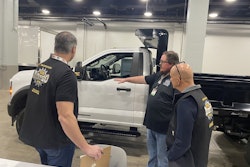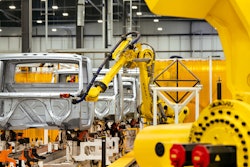Last year was a perfect storm no one saw coming. Sure, forecasts weren’t all for sunshine and blue skies, but the barrage of economic woes throughout most every business sector kept trucking in a sustained slump and is negatively impacting the aftermarket. Truck Parts & Service’s annual economic outlook talks to industry experts to evaluate how the aftermarket fared in 2008, and what may lie ahead in 2009.
It could be worse.
It may be hard to imagine how, but there were positives in 2008 and there is reason – however tempered – for optimism in 2009.
Overall, the aftermarket did not fare too badly compared to the continued slump in new truck sales and the utter collapse of other sectors and institutions throughout the general economy. Most agree the litany of bad news is not yet over, but perhaps the worst of it is.
In the aftermarket, the entire chain was forced to primarily operate in reactionary mode throughout 2008. Influences beyond its control – commodity prices, the housing market implosion and failures of financial powerhouses, to name a few – all took a heavy toll on trucking and its aftermarket support network. While no one anticipated a robust economic year, no one really predicted what happened either.
“I don’t think our industry is the only one that got blindsided. What had happened happened so quickly, and I think it happened accumulatively, that a number of things came together at the same point in time and it was kind of the perfect storm,” says Stu MacKay, president of MacKay & Company.
“What was unexpected in 2008 was the depth and velocity of the downturn that started after the global financial crisis in the fall,” says John Beering, director of global marketing for Eaton Corporation. “That said, we are now hopeful for recovery to begin in the latter half of 2009.”
The cause for optimism this year may begin with understanding what happened last year. Though experts still are sorting through the rubble for explanations – and well could be for months or years to come – a few dynamics had a direct and significant impact on trucking.
FRONTS COLLIDE
The first part of 2008 began with relative calm. There were some warning signs of things to come, but the warning sirens were not yet sounding.
Commodity prices were the biggest concern. Record-setting diesel fuel prices continued to erode carriers’ profitability, leading to fuel surcharges to help recoup some of the higher operating expenses.
Raw material costs were wreaking havoc with manufacturers and the distribution chain.
“There were some unexpected things that happened in the early part of 2008 that really affected the aftermarket,” says John Flad, vice president for Aftermarket Sales, North America, Bendix Commercial Vehicle Systems. “The huge run-up in commodities – everything from fuel, to steel, to aluminum – was totally unanticipated, at least to the extent that it occurred. That kept a lot of suppliers behind the curve right out of the gate. Our costs were going up very rapidly and, of course, you can not recover costs quite as rapidly.”
Steve Crowley, president and CEO, VIPAR Heavy Duty, says the escalating material costs resulted in more frequent then usual price increases for components. Parts affected by the higher cost of raw materials had three or four price increases during the year, while some components, such as brake drums and suspension parts, saw nearly monthly price adjustments.
As the year progressed, fuel and raw material prices decreased about as suddenly as they increased. The lower diesel prices were a boon for carriers and the reduction in steel, aluminum and copper costs helped manufacturers.
However, the rapidity of the cost fluctuations has had negative consequences. Pricing on parts are returning to pre- or early 2007 levels which, for distributors, can mean their inventory values are upside down.
“That fast ramp-up and fast decline is difficult on everyone; it’s really tough,” Crowley says. “Take a look at the value in the chain. Whether you’re a fleet or distributor, all of a sudden your inventory is inflated, let’s say, 20 percent. It’s now being deflated on the same basis and it’s all happening in a very short time span. So the inventory that you have on your shelf might not be worth what the market is willing to pay for it today when it falls that quickly.”
Molly MacKay Zacker, operational manager for MacKay & Company, compares the issue to a problem familiar in the current economic climate.
“The problem now is that distributors are left with inventory that is valued at less than what they paid for it,” she says. “It’s like the current mortgage problem, but in a different industry.”
Additionally, the devaluation of inventory assets can negatively impact a distributor’s ability to secure financing in an already tight credit market.
The dilemma and ongoing uncertainty has most distributors walking an inventory management tightrope. They have to meet customers’ parts needs but without tying up too much capital in doing so. It keeps tightly managed inventories and making market demand predictions even more critical. It is affecting manufacturers, as well.
“Inventories have been reduced at the dealer and distributor levels requiring suppliers and their parts distribution centers to be more responsive,” says Todd Kindem, ArvinMeritor’s director of sales and marketing, Commercial Vehicle Aftermarket.
Perhaps the most notable negative on the industry was, and remains, the collapse of the housing market. New home construction is at a standstill and many major markets have a backlog of unsold homes that could keep breaking ground on new homes at bay for many months to come.
The importance of residential construction to the trucking industry cannot be overstated. According to Kindem, “It is estimated for every house built that six to eight truckloads of freight service it. Overall, when the housing market starts to improve, so will the aftermarket. But it’s not expected to improve until late in 2009.”
Residential housing creates truckloads for earth and aggregate, building materials, construction machinery, appliances, household goods and more. MacKay & Company estimates that in November of 2007, the construction downturn resulted in 78,000 idle trucks. Twelve months later, the impact nearly doubled, leaving 129,000 trucks idle.
Charles Weston, president and CEO of Westpac Heavy Duty, headquartered in Phoenix, says, “In our markets, the crash of real estate and construction in general led the downturn. Next came skyrocketing fuel and metal prices, so the recovery that some predicted for midyear never came.
“The third and fourth quarters of 2008 were further compromised with the erratic downturn of the stock market, bank failures, bailouts, etc. This in turn dried up credit for many of our customers,” he continues. “Municipal revenues are way off and capital projects have been postponed or stopped. Unstable pricing has added to bidding problems for not only us, but also our customers.”
Mike Betts, president of Betts Truck Parts and Service based in California, says his company’s expectations last year were low, and they weren’t disappointed.
“We forecasted zero growth for 2008 and planned our business accordingly,” says Betts. “With the contraction in the economy, in the final quarter especially, we are seeing declines across all industry sectors, some as much as 10 to 20 percent. New housing and city government contracts are the two hardest hit in the west.”
The residential construction collapse is at the root of depressed freight volumes. The slowdown in tonnage has led to the failure of carriers and has driven truck utilization significantly down.
Large fleets that have the capability are parking older units and running newer equipment to avoid service and repairs. In select circumstances, some fleets even are cannibalizing units, acquiring their replacement parts from their idle trucks.
“Utilization, across all three [Class 6-8] weight classes and all vocations, peaked at about 89.7 percent in 2003 and 2004,” says Stu MacKay. “Now we’re down to 84 percent.”
The number of carriers that exited the market last year because of bankruptcies and failures, according to Tim Kraus, president and COO of the Heavy Duty Manufacturers Association, was about 2,500. “Freight tonnage is down and that’s the primary reason,” he says. “Fuel price retreats in the fourth quarter have helped existing truck companies, but the credit crunch is hitting all of them.”
Idle trucks and trucks running fewer miles means less need for maintenance, repairs and replacement parts. Conversely, stagnant new truck sales indicate carriers are running their vehicles longer and extending their trade cycles.
“The aftermarket is slightly insulated in the fact that there is a substantial amount of hauling still taking place and no one is buying new vehicles, but most are making repairs, up to what they can afford,” says Kraus. “Heavy-duty aftermarket sales are reported by the suppliers as down 3 to 5 percent over last year. Contrasted against OEM sales, that is not bad.”
And, when truck utilization begins to recover, replacing the poached parts and making repairs that were put off should bode well for distributors and service providers.
“If the economy starts to move forward somewhat – and it doesn’t even have to move in great big steps – if you look at the pent-up demand for parts, there are a lot of vehicles out there and they are older than they were a year and a half ago,” says Crowley. “If utilization picks back up, those vehicles will need parts, they’re going to need a lot of them, and they’re going to need attention pretty immediately.”
NOT A BAD YEAR
Despite all of the negatives, the aftermarket did not fare too badly in 2008 – at least through most of it.
“Business was relatively strong right through the end of October and into the first week of November, and then we experienced what I would call – and I don’t want to exaggerate it – but it was close to a cliff event and orders just dried up to a great degree,” says Flad. “That’s when the whole economic thing took hold and people really started to second guess themselves on orders.”
Most agree that until the fourth quarter, as the magnitude of the country’s financial crisis was manifesting, the aftermarket was on pace for a decent year.
“Aftermarket business was okay, even or slightly up, until October when credit dried up,” Kraus says. “Distributors relying on revolvers with their lenders were experiencing cash shortages and therefore reduced inventories and large purchases.”
While 2008 fourth quarter, year-over-year estimates have parts sales down about 10 to 12 percent, overall year-end performance should be close to 2007 levels.
“We are right at the 2007 level,” says Pat Biermann, president of Heavy Duty America. “Not all over the country, but overall we are.”
Crowley says the overall average may even be up slightly.
According to MacKay & Company data, sales will be off about 4.3 percent when the final tallies are done in 2008.
So, whether slightly up, slightly down or breaking even, considering financial conditions, the aftermarket did not have a disappointing year.
“The aftermarket showed its resilience during falling truck sales. But this isn’t a new phenomenon – it even can be considered typical for the aftermarket,” says Kindem. “It also showed that parts sales aren’t necessarily counter-cyclical. When trucks don’t move, parts are still required to keep units operating and safe.”
Performance also varies significantly by region. Some areas of the country were relatively unaffected by market conditions, while others were left reeling.
“If you talk to the guys in Texas, there’s no recession in Texas. The oil patch is strong, natural gas is strong, all of the resource businesses are strong,” says Stu MacKay. “But talk to dealers and distributors in Florida







